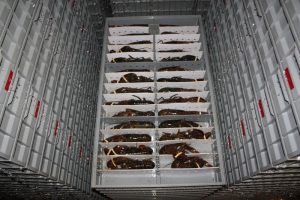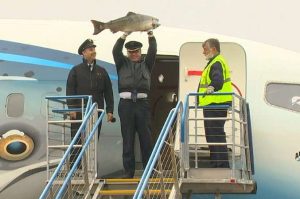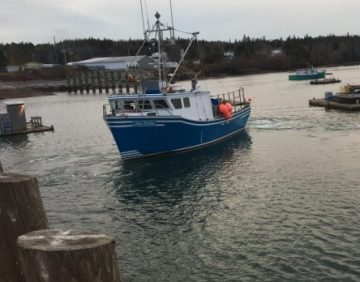Tag Archives: Menhaden
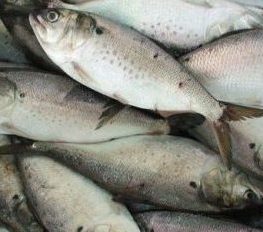
Opinion: Menhaden decision sticks to science-based fisheries management
This month, the Atlantic States Marine Fisheries Commission updated its menhaden management plan, taking into account the increasing menhaden stock. The commission was heavily lobbied by the fishing industry and by a coalition of environmentalists and sport-fishing interests led by a unit of the Pew Charitable Trusts. The Menhaden Fisheries Coalition wanted to increase its allowable catch by about 40 percent, to 280,000 metric tons per season. The environmental coalition wanted to leave more fish in the ocean, which the MFC figured would cut the industry’s catch by about a quarter, to 147,000 tons. click here to read the story 08:12
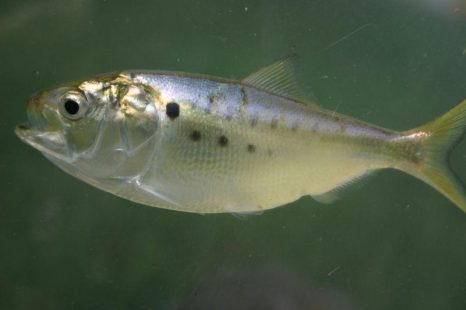
Environmentalists Are Wrong About Menhaden Fishery
Fishing companies are at odds with Rhode Island environmental advocacy groups over proposed changes for the menhaden fishing industry, Changes to the Interstate Fishery Management Plan for Atlantic Menhaden are up for a vote at the Atlantic States Marine Fisheries Commission meeting in Maryland this Monday and Tuesday. Meghan Lapp, fishery liaison for the Rhode Island-based Seafreeze Ltd, said that temporary plan shouldn’t be implemented because it’s based off of science that isn’t applicable to menhaden. click here to read the story 12:19
Decision coming Monday on Menhaden management
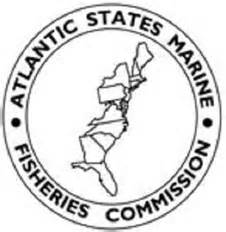 The Atlantic States Marine Fisheries Commission will decide on a new management plan for Atlantic menhaden at a meeting near Baltimore on Monday. Fishermen and environmentalists have a lot riding on how much of the resource is set aside for fishing, and how much is left for wildlife predators. Known as Amendment 3, the new rule will set the future course for managing the forage fish species eaten by many other fish, birds like osprey, dolphins and whales. click here to read the story Atlantic Menhaden Management Board – The Board will meet to consider approval of Amendment 3 to the Interstate Fishery Management Plan for Atlantic Menhaden. click here to read 3 sets of meeting materials 10:35
The Atlantic States Marine Fisheries Commission will decide on a new management plan for Atlantic menhaden at a meeting near Baltimore on Monday. Fishermen and environmentalists have a lot riding on how much of the resource is set aside for fishing, and how much is left for wildlife predators. Known as Amendment 3, the new rule will set the future course for managing the forage fish species eaten by many other fish, birds like osprey, dolphins and whales. click here to read the story Atlantic Menhaden Management Board – The Board will meet to consider approval of Amendment 3 to the Interstate Fishery Management Plan for Atlantic Menhaden. click here to read 3 sets of meeting materials 10:35
Omega Protein Employees and Supporters Call for Fisheries Managers To Protect Menhaden Jobs
 457 Omega Protein employees and supporters have signed a petition urging the Atlantic States Marine Fisheries Commission (ASMFC) to protect the jobs created by the Atlantic menhaden fishery. The petition, part of the public comment process for Amendment 3 to the Atlantic Menhaden Interstate Fishery Management Plan, provides the Commission with the perspectives of those whose livelihoods would be most affected by any new restrictions on the menhaden fishery, and contrasts the outside pressure generated by international environmental groups and individuals who do not live in one of the 15 Atlantic coastal states. The Omega Protein petition, addressed to the ASMFC’s Atlantic Menhaden Fishery Management Plan Coordinator Megan Ware, calls for the ASMFC to continue its current menhaden management approach until its scientific advisers finish their ongoing work developing menhaden-specific ecological reference points. Some environmental groups are advocating for interim reference points that reduce catch levels by up to 80 percent. click here to read the story 20:29
457 Omega Protein employees and supporters have signed a petition urging the Atlantic States Marine Fisheries Commission (ASMFC) to protect the jobs created by the Atlantic menhaden fishery. The petition, part of the public comment process for Amendment 3 to the Atlantic Menhaden Interstate Fishery Management Plan, provides the Commission with the perspectives of those whose livelihoods would be most affected by any new restrictions on the menhaden fishery, and contrasts the outside pressure generated by international environmental groups and individuals who do not live in one of the 15 Atlantic coastal states. The Omega Protein petition, addressed to the ASMFC’s Atlantic Menhaden Fishery Management Plan Coordinator Megan Ware, calls for the ASMFC to continue its current menhaden management approach until its scientific advisers finish their ongoing work developing menhaden-specific ecological reference points. Some environmental groups are advocating for interim reference points that reduce catch levels by up to 80 percent. click here to read the story 20:29

Menhaden battle once again pits Virginia against Northern states
Five years ago, the Atlantic States Marine Fisheries Commission cut the menhaden harvest by 20 percent, forcing the largest employer in the rural tip of the Northern Neck, Omega Protein, to lay off workers and decommission a ship.,, Since then, ASMFC, which manages fisheries from Maine to Florida, changed its method of assessment and says stocks are now healthy. It began easing catch limits to where the quota is now only about 6 percent short of the 212,000 metric tons it once was. Omega, which catches a half-billion fish each year, replaced two of its seven ships this year with larger, more efficient ships and rehired some of its employees. But the company sees a new problem. click here to read the story 11:27

Why Omega Protein has stirred up a big stink about a small fish
The disagreement between activists and Omega Protein depends on the answer to a simple question: Are there enough menhaden in the Gulf of Mexico? Omega says there are plenty, and it wants to keep it that way. Members of the Sierra Club Gulf Coast Group, the Coastal Conservation Association and other groups have their doubts. It’s an argument recreational fishermen and conservationists have been having with Omega for years. Omega has a menhanden reduction plant in Moss Point and regularly fishes the Mississippi Sound. The opposition to its activities began anew with vigor earlier this year when Omega began seeking a “certified sustainable seafood” designation from the Marine Stewardship Council. MSC is a London-based nonprofit (although it collects royalties from licensing its “ecolabel”) that was set up in 1997 by the World Wildlife Fund and Unilever, a global conglomerate that was at the time one of the world’s largest producers of frozen seafood. click here to read the story 10:28
My Turn: Ben Landry: Have honest discussion on fishing
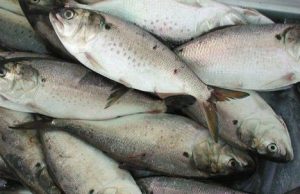 In his July 7 column (“Opinions on changes toquota are divided”), Capt. Dave Monti makes multiple inaccurate claims about the biology and management of menhaden — claims that someone who advises menhaden regulators at the Atlantic States Marine Fisheries Commission should know do not conform to the latest menhaden science. Mr. Monti mischaracterizes the health of the Atlantic menhaden stock when he says it is “on the rebound, due to the first-ever catch quota put into place in 2012.” As an ASMFC advisor, Mr. Monti should know that the 2012 catch quota was based on a stock assessment, later determined to be faulty, that showed menhaden was being overfished. That later-disproven science led the commission to unnecessarily slash menhaden catch rates by 20 percent, hurting those who make their living in the fishery. click here to read the rest, it gets better! 19:24
In his July 7 column (“Opinions on changes toquota are divided”), Capt. Dave Monti makes multiple inaccurate claims about the biology and management of menhaden — claims that someone who advises menhaden regulators at the Atlantic States Marine Fisheries Commission should know do not conform to the latest menhaden science. Mr. Monti mischaracterizes the health of the Atlantic menhaden stock when he says it is “on the rebound, due to the first-ever catch quota put into place in 2012.” As an ASMFC advisor, Mr. Monti should know that the 2012 catch quota was based on a stock assessment, later determined to be faulty, that showed menhaden was being overfished. That later-disproven science led the commission to unnecessarily slash menhaden catch rates by 20 percent, hurting those who make their living in the fishery. click here to read the rest, it gets better! 19:24
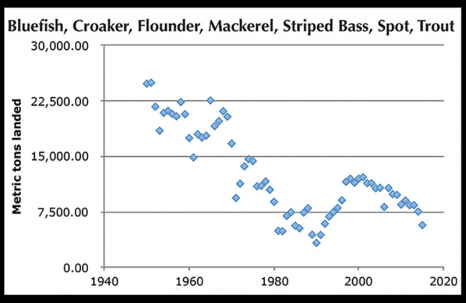
Chesapeake Bay fishery to keep deteriorating unless nutrients from land are addressed
The March Bay Journal 2017 commentary, Don’t let menhaden become a case of could have, should have, would have, laments the decline in Bay menhaden populations and blames the reduced number of predatory “sport” fish on Omega Protein’s harvest (click here). The Atlantic States Marine fisheries Commission is quite clear this year that “Atlantic menhaden are neither overfished nor experiencing overfishing” (click here). In Maryland, juvenile menhaden are sampled annually through the Estuarine Juvenile Finfish Survey. The index of juvenile menhaden has been low since 1992, and “environmental conditions seem to be a major factor driving recruitment.” (click here). Something other than overfishing must contribute to, or even be responsible for, reduced Bay menhaden populations. I contend that the primary cause of depleted finfish stocks, including bottom-feeding fish like croaker that do not eat menhaden, and the menhaden themselves, is poor water quality, not overfishing. click here to read the story 12:17
The Bunker Resurgence: The Good News Beyond Recent Fish Kills
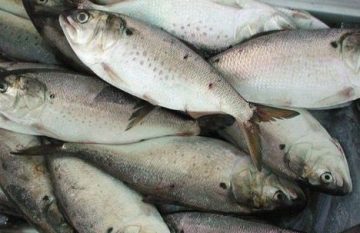 According to Megan Ware, Fishery Management Plan Coordinator of the Atlantic States Marine Fisheries Commission in Arlington, Virginia, “Results of the 2015 stock assessment indicate that the [menhaden] stock is not overfished, and overfishing is not occurring.”Joe Warren, an associate professor with the School of Marine and Atmospheric Sciences at Stony Brook University, agrees. Professor Warren’s lab uses acoustics to estimate the biomass (weight) of menhaden in the Peconic River and Flanders Bay. That’s essentially the same technology recreational fishermen employ using fishfinders.,,, Warren further observed that each of the surveys encountered anywhere from five to 25 schools that could range from hundreds to tens of thousands of fish. The professor cited anecdotal evidence that there are more bunker in New York waters as humpback whales off the Atlantic coast on the south side of Long Island have been observed feeding on bunker during the past several years. click here to read the story 15:37
According to Megan Ware, Fishery Management Plan Coordinator of the Atlantic States Marine Fisheries Commission in Arlington, Virginia, “Results of the 2015 stock assessment indicate that the [menhaden] stock is not overfished, and overfishing is not occurring.”Joe Warren, an associate professor with the School of Marine and Atmospheric Sciences at Stony Brook University, agrees. Professor Warren’s lab uses acoustics to estimate the biomass (weight) of menhaden in the Peconic River and Flanders Bay. That’s essentially the same technology recreational fishermen employ using fishfinders.,,, Warren further observed that each of the surveys encountered anywhere from five to 25 schools that could range from hundreds to tens of thousands of fish. The professor cited anecdotal evidence that there are more bunker in New York waters as humpback whales off the Atlantic coast on the south side of Long Island have been observed feeding on bunker during the past several years. click here to read the story 15:37
Bait company’s freezer nearly empty. Louisiana Wildlife and Fisheries Commission has declared an emergency!
 The Louisiana Wildlife and Fisheries Commission has declared an emergency so the state’s one menhaden bait boat can begin fishing two weeks early. Louisiana Bait Products LLC officials say the emergency is that they’ve sold most of the 5,550 tons harvested last year, and don’t want to run out. “We had a pretty start to the crawfish season, so we’ve been selling a lot of our offseason inventory this year,” agent Shawn Switzer said Thursday from the office in Abbeville. Co-founder Daniel Edgar estimated Friday that Louisiana’s crawfish, crab and catfish industries use 37,500 to 50,000 tons of bait a year. Most is trucked in from Virginia, Maryland and New Jersey. “We are going to run out of bait before April,” Edgar said. Read the story here 08:38
The Louisiana Wildlife and Fisheries Commission has declared an emergency so the state’s one menhaden bait boat can begin fishing two weeks early. Louisiana Bait Products LLC officials say the emergency is that they’ve sold most of the 5,550 tons harvested last year, and don’t want to run out. “We had a pretty start to the crawfish season, so we’ve been selling a lot of our offseason inventory this year,” agent Shawn Switzer said Thursday from the office in Abbeville. Co-founder Daniel Edgar estimated Friday that Louisiana’s crawfish, crab and catfish industries use 37,500 to 50,000 tons of bait a year. Most is trucked in from Virginia, Maryland and New Jersey. “We are going to run out of bait before April,” Edgar said. Read the story here 08:38
R.I. quota for menhaden the focus of debate
 About 30 recreational and commercial fishermen, fish processors, environmental groups (like Save the Bay) and fish managers attended Monday’s public hearing on Atlantic menhaden at the URI Bay Campus held by the Atlantic States Marine Fisheries Commission. The two main issues at the hearing were the use of ecosystem-based management strategies to determine stock status and allowable catch limits, and landing time frames, which would be used to determine allocation of quota. The Atlantic menhaden plan will be the first ASMFC plan that utilizes ecosystem-based management in this fashion. Meghan Lapp of Seafreeze, Ltd., North Kingstown (the largest producer and trader of sea-frozen fish on the East Coast) and a member of the ASMFC Atlantic menhaden Advisory Panel, said “Historically, Rhode Island has landed a lot more fish than the allocation reflects.” Read the column here 16:30
About 30 recreational and commercial fishermen, fish processors, environmental groups (like Save the Bay) and fish managers attended Monday’s public hearing on Atlantic menhaden at the URI Bay Campus held by the Atlantic States Marine Fisheries Commission. The two main issues at the hearing were the use of ecosystem-based management strategies to determine stock status and allowable catch limits, and landing time frames, which would be used to determine allocation of quota. The Atlantic menhaden plan will be the first ASMFC plan that utilizes ecosystem-based management in this fashion. Meghan Lapp of Seafreeze, Ltd., North Kingstown (the largest producer and trader of sea-frozen fish on the East Coast) and a member of the ASMFC Atlantic menhaden Advisory Panel, said “Historically, Rhode Island has landed a lot more fish than the allocation reflects.” Read the column here 16:30
Menhaden are flourishing
 A recent column by Chris Dollar (“Outdoors: The more menhaden the better,” Dec. 3) cites claims from the Chesapeake Bay Foundation that the current management of menhaden in the Chesapeake Bay has left the stock running low. The column also echoes the foundation’s position that the menhaden harvest cap should be lowered. The science suggests the opposite to be the case. In 2012, based on fears of overfishing, the Atlantic States Marine Fisheries Commission implemented a menhaden quota. Soon after the quota was implemented, scientists found the concerns of overfishing were misplaced. Further research found that menhaden are prospering coastwide. In fact, the ASMFC declared conclusively that menhaden are neither “overfished nor experiencing overfishing.” Read the rest here 15:58
A recent column by Chris Dollar (“Outdoors: The more menhaden the better,” Dec. 3) cites claims from the Chesapeake Bay Foundation that the current management of menhaden in the Chesapeake Bay has left the stock running low. The column also echoes the foundation’s position that the menhaden harvest cap should be lowered. The science suggests the opposite to be the case. In 2012, based on fears of overfishing, the Atlantic States Marine Fisheries Commission implemented a menhaden quota. Soon after the quota was implemented, scientists found the concerns of overfishing were misplaced. Further research found that menhaden are prospering coastwide. In fact, the ASMFC declared conclusively that menhaden are neither “overfished nor experiencing overfishing.” Read the rest here 15:58
State officials investigating fish die-off in Hampton Bays
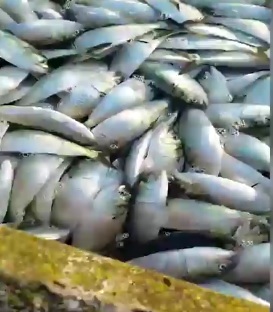 The Shinnecock Canal in Hampton Bays became the scene of a massive fish die-off Monday morning, with tens of thousands of menhaden — more commonly known as bunker — clogging the water surface for hundreds of yards. Authorities, including state Department of Environmental Conservation investigators, responded to the scene Monday. Regional DEC spokesman Bill Fonda said staff investigators were looking into the cause, but that initial indications were the die-off was “probably due to the usual reasons … We don’t see anything so far to indicate it’s chemical” or from a pollutant. Read the story here 13:08
The Shinnecock Canal in Hampton Bays became the scene of a massive fish die-off Monday morning, with tens of thousands of menhaden — more commonly known as bunker — clogging the water surface for hundreds of yards. Authorities, including state Department of Environmental Conservation investigators, responded to the scene Monday. Regional DEC spokesman Bill Fonda said staff investigators were looking into the cause, but that initial indications were the die-off was “probably due to the usual reasons … We don’t see anything so far to indicate it’s chemical” or from a pollutant. Read the story here 13:08
Regulators increase menhaden quota – “Science says the stock’s in good shape,”
 Regulators voted Wednesday to increase the annual quota for menhaden in 2017, giving Maine lobstermen a welcome boost in the supply of a popular bait fish, but no relief for Maine fishermen who want a bigger share of the national menhaden harvest. The Atlantic States Marine Fisheries Commission has struggled to set its quota for the oily forage fish, also known as pogey, with members split between wanting to maintain the annual menhaden catch at 187,880 metric tons and those who say the stock has rebounded enough to raise the quota. On Wednesday, as the commission gathered for its annual meeting in Bar Harbor, the menhaden board voted 16-2 to increase the annual quota by 6.5 percent, to 200,000 metric tons, with Pennsylvania and the U.S. Fish and Wildlife Service holding out for keeping the quota unchanged. “Science says the stock’s in good shape,” said Bill Adler of the Massachusetts Lobstermen’s Association. “I find it difficult that we can deal with overfishing, we can do a good job of cutting things down, but then we have success and we don’t know what to do with it.” Read the rest here 08:07
Regulators voted Wednesday to increase the annual quota for menhaden in 2017, giving Maine lobstermen a welcome boost in the supply of a popular bait fish, but no relief for Maine fishermen who want a bigger share of the national menhaden harvest. The Atlantic States Marine Fisheries Commission has struggled to set its quota for the oily forage fish, also known as pogey, with members split between wanting to maintain the annual menhaden catch at 187,880 metric tons and those who say the stock has rebounded enough to raise the quota. On Wednesday, as the commission gathered for its annual meeting in Bar Harbor, the menhaden board voted 16-2 to increase the annual quota by 6.5 percent, to 200,000 metric tons, with Pennsylvania and the U.S. Fish and Wildlife Service holding out for keeping the quota unchanged. “Science says the stock’s in good shape,” said Bill Adler of the Massachusetts Lobstermen’s Association. “I find it difficult that we can deal with overfishing, we can do a good job of cutting things down, but then we have success and we don’t know what to do with it.” Read the rest here 08:07
KAELIN: Fisheries commission should increase menhaden quota
 When Thanksgiving rolls around this year, the Atlantic States Marine Fisheries Commission may give New Jersey’s fishermen something to be thankful for. At its meeting Wednesday, the ASMFC will be voting on whether to increase the number of menhaden fishermen can catch each year. By voting in favor of a quota increase, which is strongly supported by the science New Jersey’s commission representatives can improve local economies and bolster the bottom line of hard-working fishermen during the summer and fall seasons while maintaining a balanced ocean ecosystem. After the release of a periodic stock assessment in 2012, the ASMFC incorrectly concluded the stock was threatened. The commission followed that assessment with a significant cut in the amount of menhaden New Jersey fishermen were allowed to catch — a cut of more than 50 percent that remains in effect today, much to the detriment of New Jersey fishing businesses. Read the story here 19:57
When Thanksgiving rolls around this year, the Atlantic States Marine Fisheries Commission may give New Jersey’s fishermen something to be thankful for. At its meeting Wednesday, the ASMFC will be voting on whether to increase the number of menhaden fishermen can catch each year. By voting in favor of a quota increase, which is strongly supported by the science New Jersey’s commission representatives can improve local economies and bolster the bottom line of hard-working fishermen during the summer and fall seasons while maintaining a balanced ocean ecosystem. After the release of a periodic stock assessment in 2012, the ASMFC incorrectly concluded the stock was threatened. The commission followed that assessment with a significant cut in the amount of menhaden New Jersey fishermen were allowed to catch — a cut of more than 50 percent that remains in effect today, much to the detriment of New Jersey fishing businesses. Read the story here 19:57
Latest report says menhaden thriving in the Gulf
 A commission that assesses the health and viability of the menhaden population in the Gulf released a report this week that says despite massive commercial hauls, the menhaden population is sound. It’s called a stock assessment for menhaden — a fish caught for catfood and fish oil supplements and a favorite food of large game fish. If fact, there’s been controversy this year over how many redfish commercial menhaden boats in the Gulf should be allowed to keep in the bycatch while fishing for menhaden. Gulf States Marine Fisheries Commission evaluated the status of the Gulf menhaden in U.S. waters and concluded the “Gulf of Mexico’s menhaden stock is not experiencing overfishing,” said Steven J. VanderKooy, a fisheries coordinator with the commission, which has an Ocean Springs office. Read the story here 19:42
A commission that assesses the health and viability of the menhaden population in the Gulf released a report this week that says despite massive commercial hauls, the menhaden population is sound. It’s called a stock assessment for menhaden — a fish caught for catfood and fish oil supplements and a favorite food of large game fish. If fact, there’s been controversy this year over how many redfish commercial menhaden boats in the Gulf should be allowed to keep in the bycatch while fishing for menhaden. Gulf States Marine Fisheries Commission evaluated the status of the Gulf menhaden in U.S. waters and concluded the “Gulf of Mexico’s menhaden stock is not experiencing overfishing,” said Steven J. VanderKooy, a fisheries coordinator with the commission, which has an Ocean Springs office. Read the story here 19:42
Menhaden aren’t being ‘decimated’ – Ronnie Sheldon, Pascagoula
 Lately, I’ve read several opinion articles about the menhaden fishery and problems with Omega Protein. I’m a lifelong resident of Pascagoula and a sport fisherman. I have no connections or interests in Omega Protein, but most of my spare time is spent fishing for trout and redfish, and I typically fish the same area (Round Island) where Omega Protein fishes for menhaden. I have no issue with menhaden fishing. Their industry provides hundreds of jobs and pumps millions of dollars into our local economy. Indirectly, their product helps provide food for many as animal feed. Their bycatch is closely regulated and very small. I’ve never personally seen evidence of any bycatch dumped overboard. Read the letter here 13:19
Lately, I’ve read several opinion articles about the menhaden fishery and problems with Omega Protein. I’m a lifelong resident of Pascagoula and a sport fisherman. I have no connections or interests in Omega Protein, but most of my spare time is spent fishing for trout and redfish, and I typically fish the same area (Round Island) where Omega Protein fishes for menhaden. I have no issue with menhaden fishing. Their industry provides hundreds of jobs and pumps millions of dollars into our local economy. Indirectly, their product helps provide food for many as animal feed. Their bycatch is closely regulated and very small. I’ve never personally seen evidence of any bycatch dumped overboard. Read the letter here 13:19
The Atlantic States Marine Fisheries Commission could increase menhaden catch
 New Jersey commercial bait fishermen want to see the coastwide catch of menhaden increased nearly 80,000 metric tons. “We’re focused on the science. If the science supports an increase, we want to take it,” said Jeff Kaelin from Lunds Fisheries, a commercial fishing operation in Cape May. The amount of menhaden fishermen will be able to take from the water next year will be decided Wednesday in Alexandria, Virginia, when the Atlantic States Marine Fisheries Commission meets. The Atlantic Menhaden Technical Committee has given the ASMFC options that would allow the catch to increase by as much as 10,000 to 80,000 metric tons. Kaelin said Jersey gill netters have been shut out of the fishery since July 4, after fishermen reached their allocation for this year. He said if they had more quota, they could be selling bait to New England lobstermen who are clamoring for bait. Read the rest here 19:22
New Jersey commercial bait fishermen want to see the coastwide catch of menhaden increased nearly 80,000 metric tons. “We’re focused on the science. If the science supports an increase, we want to take it,” said Jeff Kaelin from Lunds Fisheries, a commercial fishing operation in Cape May. The amount of menhaden fishermen will be able to take from the water next year will be decided Wednesday in Alexandria, Virginia, when the Atlantic States Marine Fisheries Commission meets. The Atlantic Menhaden Technical Committee has given the ASMFC options that would allow the catch to increase by as much as 10,000 to 80,000 metric tons. Kaelin said Jersey gill netters have been shut out of the fishery since July 4, after fishermen reached their allocation for this year. He said if they had more quota, they could be selling bait to New England lobstermen who are clamoring for bait. Read the rest here 19:22
Connecticut – DEEP to host hearing on shark, menhaden plan
 The state Department of Energy and Environmental Marine Fisheries Division will host a public hearing to get input on the Atlantic States Marine Fisheries Commission’s draft management plan for coastal sharks and for menhaden. The hearing will take place at 7 p.m. June 28 at DEEP Marine Headquarters, 333 Ferry Road. The purpose of the plan for coastal sharks is to maintain consistency between federal and state fishery management plans, where possible, and to better incorporate the intent of the smooth dogfish limited exception in the Shark Conservation Act of 2010 into state regulations. Fishermen and other interested groups are encouraged to provide input on the plan at the hearing or by providing written comment. Read the rest here 08:43
The state Department of Energy and Environmental Marine Fisheries Division will host a public hearing to get input on the Atlantic States Marine Fisheries Commission’s draft management plan for coastal sharks and for menhaden. The hearing will take place at 7 p.m. June 28 at DEEP Marine Headquarters, 333 Ferry Road. The purpose of the plan for coastal sharks is to maintain consistency between federal and state fishery management plans, where possible, and to better incorporate the intent of the smooth dogfish limited exception in the Shark Conservation Act of 2010 into state regulations. Fishermen and other interested groups are encouraged to provide input on the plan at the hearing or by providing written comment. Read the rest here 08:43
CCA is telling fish tales about Omega Protein
 On April 2, the Sun Herald published an op-ed from the spokesman of the Coastal Conservation Association — Mississippi, F.J. Eicke (“A most important fish raises need for public scrutiny”), that was filled with more holes than a fisherman’s net. Sadly, time and time again, Mr. Eicke has demonstrated dismissiveness toward sustainable fisheries and the hardworking men and women of Mississippi’s commercial fishing industry. A major contention offered by Mr. Eicke is that Mississippi’s resident menhaden stock is troubled. This statement is 100 percent incorrect and is little more than a scare tactic. There is no such thing as “Mississippi menhaden.” Due to their very nature — their biology and habitat — menhaden are a Coastwide migratory species, which is why menhaden stock assessments are conducted on a Coastwide basis. Read the rest here 21:47
On April 2, the Sun Herald published an op-ed from the spokesman of the Coastal Conservation Association — Mississippi, F.J. Eicke (“A most important fish raises need for public scrutiny”), that was filled with more holes than a fisherman’s net. Sadly, time and time again, Mr. Eicke has demonstrated dismissiveness toward sustainable fisheries and the hardworking men and women of Mississippi’s commercial fishing industry. A major contention offered by Mr. Eicke is that Mississippi’s resident menhaden stock is troubled. This statement is 100 percent incorrect and is little more than a scare tactic. There is no such thing as “Mississippi menhaden.” Due to their very nature — their biology and habitat — menhaden are a Coastwide migratory species, which is why menhaden stock assessments are conducted on a Coastwide basis. Read the rest here 21:47
Southern Flounder – Disputed fisheries studies: Politics or inexact science?
 Science plays a big role in managing fisheries. Scientists assess fish stocks, migration patterns, environmental issues — useful data that allow regulators to set policy. We expect our science to be accurate and unaffected by politics, and as citizens, we expect political actors to treat science in the same manner.,, Yet a series of e-mails found their way into the public domain from a 2007 round-robin discussion among several N.C. Division of Marine Fisheries scientists trying to peg a mortality rate for speckled seatrout caught by recreational anglers. See video It would take a few hundred words to demonstrate where science goes off the rails and how other factors, including interest group reactions, exert an influence on what is expected to be an unbiased, fact-driven process. Read the rest here 10:30
Science plays a big role in managing fisheries. Scientists assess fish stocks, migration patterns, environmental issues — useful data that allow regulators to set policy. We expect our science to be accurate and unaffected by politics, and as citizens, we expect political actors to treat science in the same manner.,, Yet a series of e-mails found their way into the public domain from a 2007 round-robin discussion among several N.C. Division of Marine Fisheries scientists trying to peg a mortality rate for speckled seatrout caught by recreational anglers. See video It would take a few hundred words to demonstrate where science goes off the rails and how other factors, including interest group reactions, exert an influence on what is expected to be an unbiased, fact-driven process. Read the rest here 10:30
What is killing off the menhaden in Long Island Sound? ‘Whirling disease’ suspected
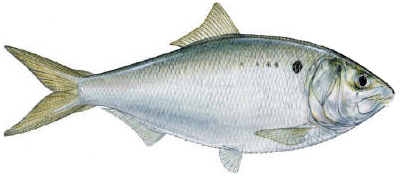 What is killing off the menhaden? The die-off has been reported at several locations, including in Long Island Sound along eastern Connecticut and in the estuaries of several area rivers. A viral “whirling disease” is believed to be the chief suspect in the die-off, said Mark Alexander, supervising fisheries biologist for the state Department of Energy and Environmental Protection. Read the rest here 10:08
What is killing off the menhaden? The die-off has been reported at several locations, including in Long Island Sound along eastern Connecticut and in the estuaries of several area rivers. A viral “whirling disease” is believed to be the chief suspect in the die-off, said Mark Alexander, supervising fisheries biologist for the state Department of Energy and Environmental Protection. Read the rest here 10:08
Best Available Science? – Video, Watermen React to Increase in Menhaden Quota Increase
 “This is a regulation that’s been overturned and it’s great for us, I mean it’s only 10 percent but you have to start somewhere. It’s a great thing for us,” said Newberry. But some watermen are still angered that they weren’t restored to their old catch limits. They’ve had a twenty percent cut in quotas since those earlier assessments. “I’ve got four men working for me. There’s five families feeding off my boat. I’ve got a 20 percent reduction for year, and now they’re like well here’s ten percent back. They didn’t need a reduction,” said Boo Powley, Read the rest here 08:23
“This is a regulation that’s been overturned and it’s great for us, I mean it’s only 10 percent but you have to start somewhere. It’s a great thing for us,” said Newberry. But some watermen are still angered that they weren’t restored to their old catch limits. They’ve had a twenty percent cut in quotas since those earlier assessments. “I’ve got four men working for me. There’s five families feeding off my boat. I’ve got a 20 percent reduction for year, and now they’re like well here’s ten percent back. They didn’t need a reduction,” said Boo Powley, Read the rest here 08:23
Catch cap eased on menhaden, ‘backbone’ of East Coast fisheries
 The nearly unanimous vote to lift the catch cap by 10 percent represents a compromise between commercial fishermen, who contend that they can safely harvest many more, and conservationists, who remain worried that there still are not enough menhaden in the Chesapeake Bay to sustain striped bass, known to many as rockfish. “We’re heading in the right direction,” said Robert T. Brown Sr., president of the Maryland Watermen’s Association, who asserted that there are plenty of menhaden in the bay. Read the rest here Menhaden Fishery: Here’s how it’s done 07:55
The nearly unanimous vote to lift the catch cap by 10 percent represents a compromise between commercial fishermen, who contend that they can safely harvest many more, and conservationists, who remain worried that there still are not enough menhaden in the Chesapeake Bay to sustain striped bass, known to many as rockfish. “We’re heading in the right direction,” said Robert T. Brown Sr., president of the Maryland Watermen’s Association, who asserted that there are plenty of menhaden in the bay. Read the rest here Menhaden Fishery: Here’s how it’s done 07:55
Atlantic States Marine Fisheries Commission approve increase in menhaden catch limits
 A multi-state regulatory board is approving higher catch limits for Atlantic menhaden, a fish that plays important roles as bait and part of the ocean food web. The Atlantic States Marine Fisheries Commission’s Atlantic Menhaden Management Board voted to raise catch limits from 170,800 metric tons per year to 187,880 metric tons per year. The limits apply this year and in 2016. Read the rest here 15:36
A multi-state regulatory board is approving higher catch limits for Atlantic menhaden, a fish that plays important roles as bait and part of the ocean food web. The Atlantic States Marine Fisheries Commission’s Atlantic Menhaden Management Board voted to raise catch limits from 170,800 metric tons per year to 187,880 metric tons per year. The limits apply this year and in 2016. Read the rest here 15:36
VANASSE: Menhaden oped full of fish tales
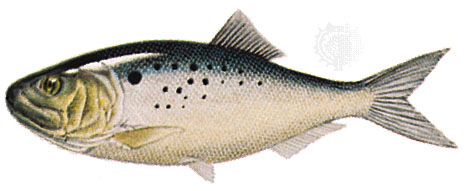 The Asbury Park Press has been a source of accurate information regarding the menhaden fishery, thanks in large part to the solid reporting done by reporter Dan Radel. Unfortunately, an April 30 opinion piece by Paul Eidman, “Don’t increase menhaden catch limits,” contained a number of misleading and inaccurate statements. Eidman asserted that the current menhaden assessment “is based on a ‘single species’ model that does not take into account,,, Read the rest here 08:43
The Asbury Park Press has been a source of accurate information regarding the menhaden fishery, thanks in large part to the solid reporting done by reporter Dan Radel. Unfortunately, an April 30 opinion piece by Paul Eidman, “Don’t increase menhaden catch limits,” contained a number of misleading and inaccurate statements. Eidman asserted that the current menhaden assessment “is based on a ‘single species’ model that does not take into account,,, Read the rest here 08:43
Menhaden: The stock is healthy, so should harvest cuts remain?
 February, a regional fisheries commission reversed course and announced Atlantic menhaden were neither being overfished nor experiencing overfishing — an important finding for Virginia, which has the only menhaden rendering plant left on the East Coast. Next month, the will meet in Northern Virginia to decide if that new benchmark assessment is convincing enough to lift a controversial 20 percent coast-wide reduction in the commercial fishery imposed in 2013. Read the rest here 21:02
February, a regional fisheries commission reversed course and announced Atlantic menhaden were neither being overfished nor experiencing overfishing — an important finding for Virginia, which has the only menhaden rendering plant left on the East Coast. Next month, the will meet in Northern Virginia to decide if that new benchmark assessment is convincing enough to lift a controversial 20 percent coast-wide reduction in the commercial fishery imposed in 2013. Read the rest here 21:02

New menhaden study renews debate on catch limits
A little more than two years after authorities clamped down on harvests of Atlantic menhaden, prompting protests from Maryland watermen and other commercial fishermen, a new analysis by scientists finds they are in better shape — better, in fact, than believed when the catch was cut back. But conservationists and anglers disagree. Peter Baker, Northeast fisheries director for the Pew Charitable Trusts,,, Read the rest here 15:03
Menhaden Fishing Ports Top NOAA’s Newest List; Support Coastal Communities
The Menhaden Fisheries Coalition is pleased to note that five of the nation’s top ten ports are largely supported by the commercial menhaden fishery, according to NOAA’s latest Fisheries of the United States report, released today. In Reedville, Va., Empire-Venice, La., Intracoastal City, La., Cameron, La., and Pascagoula-Moss Point, Ms., Read the rest here 20:33
Pound Net Watermen Prepare for Menhaden Bycatch Limits
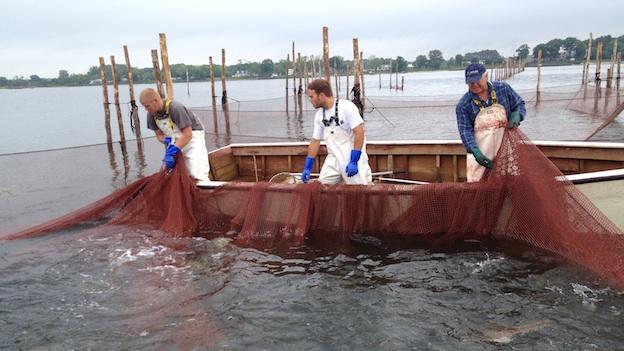 Today, a Maryland waterman with a pound net can catch as many menhaden as he or she would like, on Friday, that gets cut back to 6,000 pounds a day to protect the species from overfishing, Video, and Read more here 12:26
Today, a Maryland waterman with a pound net can catch as many menhaden as he or she would like, on Friday, that gets cut back to 6,000 pounds a day to protect the species from overfishing, Video, and Read more here 12:26
































